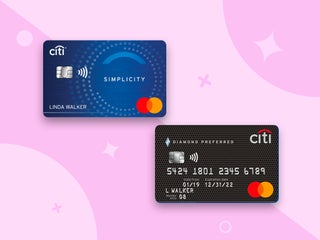Summary
Depending on your goals and priorities, either a product change or a new application may make sense. But unless you have your eye on another Chase card in the near future, a fresh application for the Freedom Flex could seriously pay off.
The content on this page is accurate as of the posting date; however, some of our partner offers may have expired. Please review our list of best credit cards, or use our CardMatch™ tool to find cards matched to your needs.
Chase rocked the world of cash back when it announced the retirement of the popular Chase Freedom card — but luckily the new Chase Freedom Flex℠ has proven itself a more-than-worthy successor.
The Freedom Flex builds on the Freedom card’s legacy to offer new bonus rewards categories and cardholder perks, and it already stands out as one of the top cash back credit cards on the market, especially for budding travelers and fans of flexible rewards.
If you’re a current Freedom cardholder, you may already be planning to request a product change. But wait: Despite their similarities, the Freedom and Freedom Flex are technically two entirely different products.
This begs the question: Should you switch or put in a new application?
Card details
| Card | Chase Freedom* | Chase Freedom Flex |
|---|---|---|
| Rewards rate |
|
|
| Sign-up bonus | None (card no longer available to new applicants) | $200 if you spend $500 in the first 3 months |
| Annual fee | $0 | $0 |
Freedom vs. Freedom Flex: Key differences
While the old and new Chase Freedom cards share much of the same DNA, there are some key differences to keep in mind if you’re considering a switch or new application. The good news for current Freedom cardholders is that the Freedom Flex only builds on what’s already great about its predecessor.
Cash back categories
The most significant change is the Freedom Flex card’s bonus cash back categories. Both the Freedom and Freedom Flex offer 5 percent cash back in rotating bonus categories, up to $1,500 in spending per quarter after activation, then 1 percent. However, the strength of the Freedom Flex is its additional fixed bonus categories. With the Freedom Flex, you’ll earn unlimited 5 percent cash back on travel booked through the Chase Ultimate Rewards portal and 3 percent back on dining and drugstore purchases.
Part of the Freedom Flex’s popularity can be attributed to sharing the rotating categories structure that made the original Freedom card so well-liked. Plus, the Freedom Flex adds much-needed consistency via year-round categories.
The Freedom Flex card’s fixed categories should significantly boost your cash back earnings, especially if the Chase cash back calendar doesn’t line up with your spending in a given quarter. Indeed, thanks to the inclusion of a practical year-round category like dining, we estimate the Freedom Flex carries an average rewards rate of 1.68 percent back outside of its rotating categories (versus a flat 1 percent with the Freedom card).
Switch from Visa to Mastercard
The other major change from the Freedom to the Freedom Flex is the payment card network processor: The Freedom uses Visa as its network processor, while the Freedom Flex uses Mastercard.
This switch from Visa to Mastercard introduces a number of new cardholder benefits. Most notable is the cell phone protection included when you pay your monthly cell phone bill with the Freedom Flex card. You’ll be covered up to $800 per claim and $1,000 per year against theft and damage for any phones listed in your bill.
The Freedom Flex also comes with a chance to earn one $5 Lyft credit per month and a free ShopRunner membership. Meanwhile, Chase-specific perks like purchase protection, extended warranty coverage and a limited-time complimentary DashPass membership have carried over from the Freedom to the Freedom Flex.
Should you switch to the Freedom Flex or put in a new application?
Given the improvements Chase has made to the Freedom card family with the introduction of the Freedom Flex, current Freedom cardholders may be eager to make the switch. And doing so is as easy as calling Chase to request a product change.
As long as your account is in good standing, your request should go through with no trouble. Your rewards, credit limit, purchase APR and card number should all carry over from the Freedom to the Freedom Flex, making the transition seamless.
Swapping the Freedom for the Freedom Flex is not the only way forward, however. Depending on your short- and long-term goals, a new application may be the smarter move.
The case for switching
Since the Freedom Flex also has the Freedom’s rotating bonus categories and adds new year-round categories, it’s all upside on the rewards front, whether you switch or apply fresh.
By switching from the Freedom to the Freedom Flex, you’ll enjoy added consistency in earning rewards and likely more cash back overall than if you’d stuck with the Freedom — especially if you spend heavily on dining, drugstore purchases or travel (and don’t mind booking through the Ultimate Rewards portal). Plus, you get a number of valuable new cardholder perks as part of the change from Visa to Mastercard.
One big benefit of a product change is that you’ll avoid the hard inquiry that comes with a new credit card application. A hard inquiry temporarily drops your credit score a few points and remains on your credit report for up to two years. Too many hard inquiries on your report could hurt your chances of getting approved for a new card in the short term.
Switching also allows you to keep a Chase 5/24 slot open. According to Chase’s informal “5/24” rule, you likely won’t be approved for a new Chase card if you’ve opened five or more credit cards with any issuer in the last 24 months.
Since the Freedom Flex is considered a new product, if you apply and are approved, you’ll have one less 5/24 slot available. That could be a deal-breaker if you have your eye on a premier travel card, airline rewards card or business card issued by Chase.
The case for a new application
The most obvious upside of putting in a new application instead of switching is the Freedom Flex card’s sign-up bonus. Since Chase considers the Freedom Flex an entirely new product, current Freedom cardholders are eligible for the card’s sign-up bonus, even if they’ve already earned a bonus with the Freedom card.
If you switch instead of applying fresh, you’ll have to miss out on the bonus — and in this case, it’s a big loss. The Freedom Flex is currently offering a $200 cash bonus if you spend $500 in the first three months, which is relatively impressive for a no-annual-fee rewards card bonus.
Putting in a new application for the Freedom Flex and keeping your Freedom account active also allows you to enjoy a higher total spend cap in Chase’s rotating cash back categories. Since categories are the same on both cards, if you apply for the Freedom Flex and keep your Freedom account open, you can max out rotating categories with both cards, earning 5 percent back on up to $3,000 in combined spending per quarter.
While a $3,000 quarterly spending cap may be impractical in some bonus categories, it could seriously boost your cash back earnings in others, like online shopping (Amazon.com purchases are eligible for bonus cash back from October to December 2022, upon enrollment).
Aside from the rewards benefits, a new application could also help your credit score. Though you’ll take a temporary hit from the hard inquiry, opening a new account will increase your total available credit. Credit utilization makes up 30 percent of your FICO credit score, and a new Freedom Flex credit line should give you even more room to keep your credit utilization ratio low.
Bottom line
While a product switch from the Freedom to the Freedom Flex is the most obvious route for most cardholders, a fresh application for the Freedom Flex definitely makes sense.
Not only can you score a large sign-up bonus and a higher spend cap in Chase’s rotating cash back categories, but you’ll also enjoy the peace of mind and credit score benefits of more available credit. Unless you can’t spare a Chase 5/24 slot, applying for the Freedom Flex is worth considering.
Editorial Disclaimer
The editorial content on this page is based solely on the objective assessment of our writers and is not driven by advertising dollars. It has not been provided or commissioned by the credit card issuers. However, we may receive compensation when you click on links to products from our partners.




